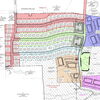Processing Your Payment
Please do not leave this page until complete. This can take a few moments.
- News
-
Editions
-
- Lists
-
Viewpoints
-
Our Events
-
Event Info
- Women's Leadership Forum 2025
- On the Road with Mainebiz in Bethel
- Health Care Forum 2025
- On The Road with Mainebiz in Greenville
- On The Road with Mainebiz in Waterville
- Small Business Forum 2025
- Outstanding Women in Business Reception 2025
- On The Road with Mainebiz in Bath
- 60 Ideas in 60 Minutes Portland 2025
- 40 Under 40 Awards Reception 2025
- On The Road with Mainebiz in Lewiston / Auburn
- 60 Ideas in 60 Minutes Bangor 2025
Award Honorees
- 2025 Business Leaders of the Year
- 2024 Women to Watch Honorees
- 2024 Business Leaders of the Year
- 2023 NextUp: 40 Under 40 Honorees
- 2023 Women to Watch Honorees
- 2023 Business Leaders of the Year
- 2022 NextUp: 40 Under 40 Honorees
- 2022 Women to Watch Honorees
- 2022 Business Leaders of the Year
-
-
Calendar
-
Biz Marketplace
- News
- Editions
- Lists
- Viewpoints
-
Our Events
Event Info
- View all Events
- Women's Leadership Forum 2025
- On the Road with Mainebiz in Bethel
- Health Care Forum 2025
- On The Road with Mainebiz in Greenville
- On The Road with Mainebiz in Waterville
- + More
Award Honorees
- 2025 Business Leaders of the Year
- 2024 Women to Watch Honorees
- 2024 Business Leaders of the Year
- 2023 NextUp: 40 Under 40 Honorees
- 2023 Women to Watch Honorees
- 2023 Business Leaders of the Year
- + More
- 2022 NextUp: 40 Under 40 Honorees
- 2022 Women to Watch Honorees
- 2022 Business Leaders of the Year
- Nomination Forms
- Calendar
- Biz Marketplace
Downeaster sparks bus talks
 Photo/Tim Greenway
Jennifer Geiger, director of Main Street Bath, hopes any intercity bus system wouldn't be structured to take shoppers out of the city's downtown
Photo/Tim Greenway
Jennifer Geiger, director of Main Street Bath, hopes any intercity bus system wouldn't be structured to take shoppers out of the city's downtown
As Amtrak's Downeaster train reached its 10-year anniversary earlier this month, its expected extension to Freeport and Brunswick next November has revived a decade-old debate about the benefits and pitfalls of intercity bus service among Brunswick and surrounding communities. Proponents of a network of coordinated bus lines from Portland to as far north as Lewiston believe intercity service could move workers, residents and tourists more efficiently and cheaply than a series of town-operated outfits, but detractors worry intercity bus service could benefit some communities at the expense of others.
In early December, the Freeport Town Council, anticipating an average of 100 people per day arriving on the Downeaster, voted to contribute $5,000 to join a Midcoast Council of Governments study analyzing how best to create intercity bus service in its service area of Brunswick, Bath, West Bath, Topsham and
Harpswell. (The remainder of the study's funding comes from a $10,000 Community
Development Block Grant and a $5,000 Maine Department of Transportation grant.) While some media reports have referred to this as the “Brunswick Explorer Study” because much of the debate has focused on regionalizing Brunswick's Explorer bus service, Jeff Kobrock, executive director of the Midcoast Council of Governments, is adamant the study will also consider other transit options.
“There's an obvious opportunity between Brunswick and Bath having public transit, those transit systems coming very close to meeting but not quite meeting, and the fact that Topsham is immediately adjacent to Brunswick yet has no public transit,” says Kobrock.
Of the 60 towns and six cities in the Greater Portland Metropolitan Statistical Area, only eight have publicly operated, fixed-route bus services. (This does not include nonprofit bus services with limited schedules, designed for the elderly and disabled.) Among those, there are two intercity services — Portland's METRO, linking Portland, Westbrook and Falmouth; and the ZOOM, linking Biddeford, Saco and Old Orchard Beach, with Scarborough stops. Bath has for years operated its own weekday loop around town, averaging about 10,000 rides annually. The Brunswick Explorer, launched in September 2010, operates a weekday system that in its first year logged 17,000 rides; stops include big-box stores, area social service agencies and local hospitals.
“The Downeaster is the main transit investment that transcends the region,” says Carl Eppich, transportation planner for the Portland Area Comprehensive Transportation System, a collective of 15 municipalities that coordinates regional transportation planning. “So suddenly you have this spine of real economic investment that is triggering transit-oriented development along it.”
Many area officials are taking a wait-and-see approach to the Brunswick regional transit study, the results of which will be presented to town councils in May or June. Bath officials in particular are wary of any transit proposal structured with a retail focus, rather than a commuter focus, that could transport residents to shopping areas outside of Bath, like Cook's Corner in Brunswick and Freeport's downtown.
“To some extent, for every town, there would be some ‘Gosh, why are we taking our local residents away from our businesses and taking them somewhere else?'” says Jennifer Geiger, director of Main Street Bath, a nonprofit that works to improve downtown Bath through promotion, design and economic development. Geiger says “you can't police” where people shop, but she doesn't think taxpayer dollars should be spent on a service that is structured to take people out of Bath to shop.
Bath briefly participated in intercity bus service in the past. In 1996, a Brunswick- Bath-Topsham-shared route dissolved after barely a year in operation because, according to former Bath City Planner Jim Upham, Brunswick and Topsham didn't incorporate transit options to get riders out of the neighborhoods to the intercity bus stops along Route 1. “There was no way to get riders to the main route,” he says, “so the ridership was very poor.”
Today, officials in Brunswick and surrounding towns agree that the price of gas, the shaky economy and the transportation needs of tourists and residents create a need for comprehensive public transit service; the question is how that will look. Freeport Town Councilor Kristina Egan, a principal at a Freeport transportation and energy consultancy, the Harraseeket Strategies Group, was one of three councilors to vote against contributing town money to the regional transportation study at the meeting Dec. 6. Egan believes regional ooperation is necessary to solve a host of governance challenges, but her understanding is the study will focus on expanding the Brunswick Explorer and she doesn't think that's necessarily the most efficient or cost-effective option. Like most public transit, the Explorer's $250,000 annual budget is heavily subsidized, in this case by a public-private partnership funding model — 80% from federal grants, the remainder from a mix of public and private funds and modest ticket revenue.
“I feel we need to look comprehensively at the public transportation systems that are around us and figure out what the ridership is and design a system to serve that need,” Egan says.
Like Egan, Sande Updegraph, executive director of the Freeport Economic Development Corp., thinks any regional transit analysis must go beyond the Explorer's model. Updegraph believes, for example, that Freeport must find a way to transport employees from cities like Lewiston and Portland to staff-strapped retail outlets in Freeport.
“This is not only to serve the Downeaster passengers, but we're also seriously looking at using the train and regional transportation to move work force,” she says.
PACTS's Eppich believes the solution to regional transportation headaches in greater Portland could come from the past. One recent morning in the conference room at the Greater Portland Council of Governments, which oversees PACTS, Eppich traced his finger along a network of red zigzags on an antique map of Maine's southern coastline. The lines represent trolley car tracks that in 1909 snaked as far south as Portsmouth, N.H., and as far north as Lewiston.
“See, it's not a radical idea,” Eppich says of a regional public transportation network. “It existed here 100 years ago. So we're just trying to get back to that.”










Comments